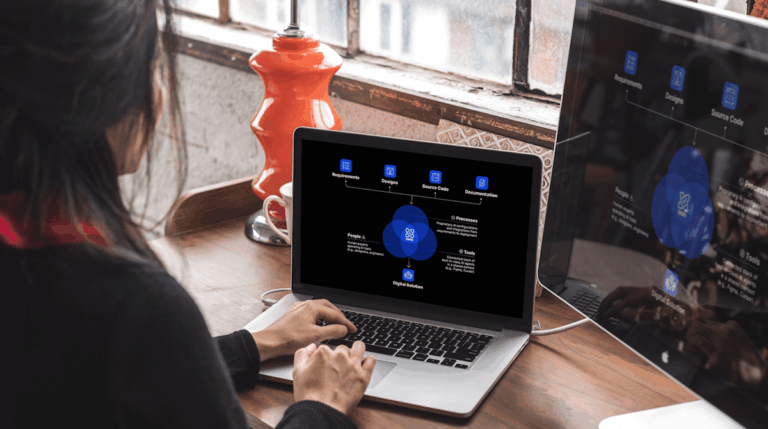Introduction to UX Strategies in Product Development
When building a new product, there are three fundamental questions you need to answer that are essential to your product strategy and product development plan:
- What problem will this solve?
- How do we build it?
- What is the most effective strategy to get it out into the market, incorporating agile product development and design thinking principles?
But within each of those broad questions, there are several important details to consider. One key aspect is understanding how user experience—commonly known as UX—fits into the process of designing, building, and launching a new product.
The answer will inevitably vary depending on what you’re trying to build, who you’re building for and how much money you have to spend. But it is a critical consideration, particularly in tight markets where competition is intense and user experience can elevate your product above the rest. Consider this statistic: More than 80% of customers say they would leave a brand they are loyal to after three or fewer instances of poor user experience.
This article is intended to provide key questions and insights as you consider how user experience factors into your product development process. It highlights how UX strategies can enhance existing products and features to boost adoption and strengthen your market position.
What is UX in the product development process, and why does it matter?
User experience (UX) is all about how people interact with your product—like a website or app—and how easy and enjoyable it feels to use. This isn’t new news; Forrester found that every dollar spent on UX can bring back $100 in return, and Forbes even reported an ROI of 9,900%. That’s why having a solid UX strategy is key—it’s a vital part of your overall business plan that benefits both your users and your company.
When developing your UX strategy, it’s essential to understand your target audience. Knowing your potential customers and applying user-centered design principles ensures your product meets their needs. Consumer-focused companies tend to prioritize product and UX design to connect meaningfully with individual users, standing out in competitive markets. In contrast, B2B companies often focus more on fulfilling their clients’ specific requirements than on the end-user experience.
Another key factor to consider: What goals are you trying to achieve on behalf of your users and on behalf of your business? If you’re targeting a certain amount of business value out of a new product or solution, you may want to consider how smart UX strategies could help you get there.
How does iteration and user research affect user experience?
Decades ago, software was built like a house. Once it was built, it was done. From that point forward, any adjustments or improvements would require renovations – a time- and cost-consuming process.
Today, software development no longer operates under the same constraints, and the process of iterating allows companies to improve products over time as the need arises.
This is a game changer when it comes to user experience because it allows companies to layer that into their product development process, rather than building it in from the start. And the process of iterating over time is far more effective, eliminating unnecessary cost and risk. Companies can launch a minimum viable product (MVP) quickly to enter the market, then continuously research and test the user experience. This ongoing process allows for strategic and deliberate UX improvements. Validated user research and customer feedback are critical during this phase, helping to refine the product based on genuine user needs and insights.
In my experience, I’ve seen a lot of companies try to solve all the potential problems and hiccups right from the jump, which adds time and complexity to the development process. It also assumes too much: You don’t know what your customers will want and need until they get the chance to experience what you’ve built firsthand.
As products are improved over time, concept development, concept testing, and feasibility analysis become integral parts of the product development cycle. These steps ensure that each iteration is aligned with user needs and business goals, ultimately leading to a successful final product.
How do you adjust UX strategy?
Say your company notices people dropping out of your signup process when asked for their phone number. That’s a UX issue. Now you can start asking questions: Is the request too early or late? Does it fit your business? Is the reason clear?
If you can connect directly with your target market and ask for their input, that’s a fantastic way to gather valuable customer feedback. Another approach is to walk a layperson through your product concept for the first time and observe their reactions—this early-stage insight can be incredibly helpful. You might also try A/B testing by creating two versions of your signup form and seeing which performs better over a set period. Whichever method you choose, this idea generation and user research process will help you make informed adjustments to your UX strategy moving forward.
Setting clear goals is crucial for effective UX strategies. Define where you want to move the needle and establish key performance indicators to track progress. Use both qualitative and quantitative data to measure success and guide your UX strategy over time.
What are some common UX misconceptions?
UX design is not permanent. Many people mistakenly believe that UX decisions must be perfect from the start. However, software is often flexible, and changes can be made relatively easily, such as adjusting questions on a form. This adaptability is crucial in the agile product development process, allowing teams to respond to user feedback and evolving customer needs efficiently.
UX and UI are different. People often confuse user experience with user interface (UI). Think of UX as the story you’re telling and UI as the special effects that bring it to life. UX is the “what,” and UI is the “how.” A structured design process ensures both work together seamlessly, enhancing the overall user experience. Investing in UX early saves effort in UI design and supports your product development process by aligning with business goals and customer needs.
UX strategies can help you achieve your business goals. User experience plays a critical role in advancing the strategic goals you aim to accomplish. It is an integral part of your product development process and overall product strategy. After all, without user adoption, even the best product ideas and development efforts will fail to gain market share and deliver value.
How can I get started?
If you have an existing product, start by defining its value proposition. Ask yourself, “What problem is my product designed to solve (within the target market)?” Evaluate how well it meets customer needs by gathering user feedback from internal teams or potential customers. Conduct market research and competitive analysis to see how competitors gain advantage through their UX strategies and products.
Next, spend time and energy prioritizing what will give you the greatest return. For example, if there is a pain point you know is costing you considerable time and efficiency, consider how you can move the needle on that. Effective project management is essential here, as it helps align priorities with the overall product team and supports the new product development process to ensure improvements are implemented efficiently.
In this collaborative environment, the product manager leads UX improvements and coordinates with the design, sales, and other teams. This teamwork ensures user feedback is integrated, refining the product vision and roadmap. Aligning strategic goals across departments helps enable a smooth product launch and supports test marketing to monitor progress and measure success.
Finally, be creative. Don’t feel the need to snap immediately to a solution. Instead, try to poke at the problem from several different angles. Consider what changes could make a difference with the lowest level of effort. This mindset not only fosters innovation but also helps uncover unexpected opportunities that can enhance the user experience and drive better business outcomes.
Where do I turn for support?
Lean on experts to understand your product and implement strategic UX strategies that drive business growth. You don’t have to navigate this alone—partner with experienced product development teams to boost your product’s success.






